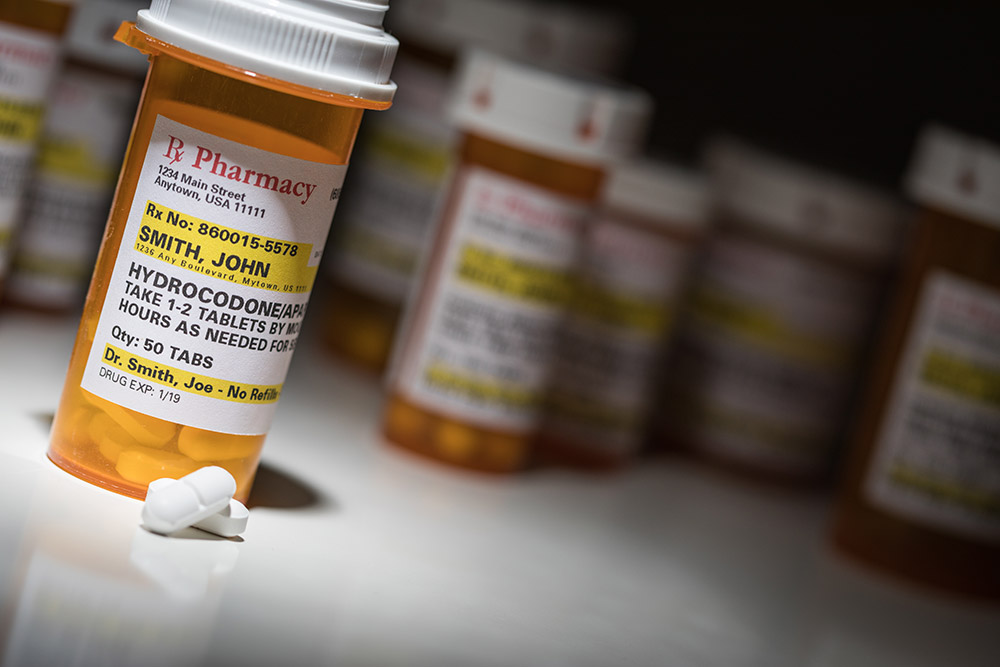“We must act now to protect people from the darker side of painkillers.” So says Health Secretary, Matt Hancock, after data showed a 60% increase in prescription opioids over the past 10 years. Now all opioid medications will carry prominent health warnings, to increase awareness of painkiller addiction.

England’s Chief Medical Officer, Dame Sally Davies, said: “We know that long-term use of painkillers can lead to life-altering and sometimes fatal addictions – so I am delighted to see measures put in place to raise awareness of the risks of codeine and prescribed drugs.”
UKAT provide addiction interventions, prescription drug detox and rehab programmes for painkiller addiction. If you want to stop using prescription opioids or any other addictive medications, please call us for a confidential assessment and fast access to addiction treatment.
The Vicious Cycle of Prescription Opioids and Chronic Pain
Chronic pain refers to any pain that endures for longer than three months beyond the original cause of the pain (such as an injury, operation, infection or other illness). With millions of people taking prescription opioids for chronic pain, what do expert practitioners say about ongoing opioid use?
Osteopath and author, Nick Potter, has examined our relationship with pain in his 2019 book called ‘The Meaning of Pain’. Speaking on BBC Radio 4’s Today programme, Potter has called for a radical shift in the use of prescription opioids, especially for chronic pain.
“Particularly with opiates, what we’ve discovered is they work for a while, and there is a vital potential for opiates – for example immediately after an operation or in treating painful conditions like cancer,” Potter said. “But actually after a certain period, unfortunately, they cease to be effective, and they are highly addictive. So patients then get stuck in a vicious cycle of not being relieved of their original pain – but also, when they come off them, having more pain.”
According to Potter, painkiller addiction increases chronic pain. This is partly due to drug tolerance, where the same dosage of opioids becomes less effective at managing pain over time. It’s also down to the side effects of addiction, which include a wide range of emotional and physical symptoms, including pain.
Pain and Our Emotions – Why Prescription Opioids Don’t Work for Trauma-Induced Pain

Bannister went on to explain that a person who was hit repeatedly with a hammer as a child, then hit with a hammer again as an adult, would feel a heightened pain sensation, as compared to a peer who was hit with a hammer in adulthood but never in childhood.
This is one of the reasons why prescription opioids are ineffective in treating chronic pain – they cannot address the emotional drivers of pain, including past trauma, which also predispose people to addiction.
This is where specialist addiction treatment is much more targeted, including prescription drug detox and rehab programmes. They can assess and treat the reasons why people become addicted to prescription opioids, as well as equipping patients with non-pharmaceutical strategies to manage and process their pain.
Are You Suffering with Painkiller Addiction?
Painkiller addiction, including to prescription opioids, is a baffling and devastating illness. Initially, a trustworthy healthcare worker may have prescribed you pain-relieving pills, such as your GP, operating surgeon or nurse prescriber. Perhaps you weren’t told about the risks of addiction, nor informed about the signs of prescription drug dependence.

If you’ve been taking prescription opioids for longer than three months – such as codeine, dihydrocodeine, Tramadol or morphine – then please consider having an addiction assessment. If your pain has returned or become stronger, then help is available. If you’ve upped your dose, you’re mixing opioid medications or you’re topping up a prescription with other drugs, it’s time to get help with addiction.
Please always seek specialist addiction treatment before trying to come off opioids. Withdrawal symptoms vary from person to person, but it can be painful, distressing or dangerous to stop opioids suddenly without medical supervision. UKAT can advise you today on our safe and successful prescription drug detox and rehab programmes in our CQC-rated centres.

